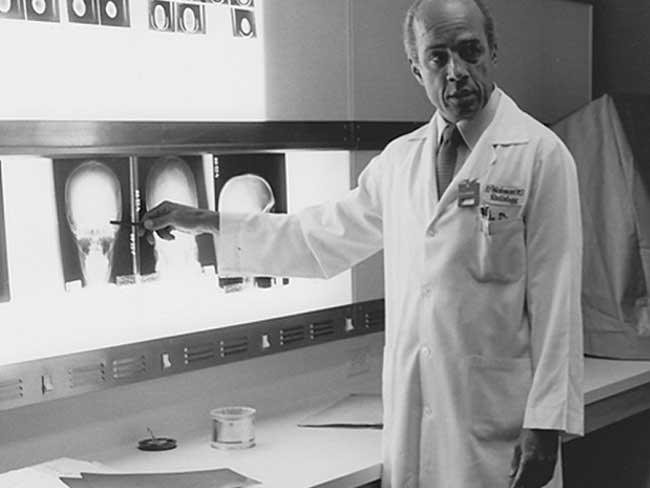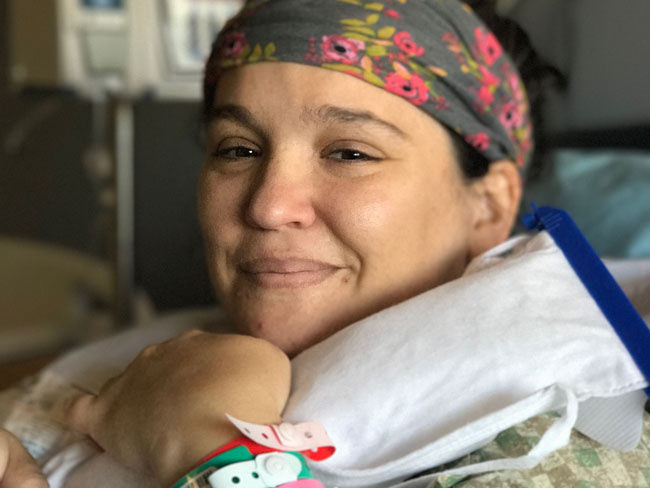2022 Annual Report
The year in summary
Our integrated model, innovation, and value-based approach helped us adapt to provide care and service when, how, and where people need it.
Meeting needs in the pandemic
We are honored to have been able to serve and care for our members, patients, and their families during the pandemic.
2022 Annual Report
High-quality care members can count on
Our members and patients deserve care that is effective and safe, timely and efficient, compassionate and equitable.
Our care teams are dedicated to helping prevent disease, heal illnesses and injuries, manage complex and ongoing health conditions, and improve mental health. They work together seamlessly within Kaiser Permanente’s model, which combines care and coverage, to deliver high-quality care.
The third year of the COVID-19 pandemic brought continued threats to the health of our members, patients, and communities. It also brought challenges to health care organizations, including Kaiser Permanente. Through it all, we maintained our commitment to delivering high-quality care and took important steps to evolve how we measure care quality.
The year began in the middle of the COVID-19 omicron variant wave of infections. Fortunately, by that point, many people had been vaccinated against COVID-19. So, severe illnesses and death caused by the virus were less common than in the first 2 years of the pandemic.
During 2022, our care teams treated 1.8 million patients who had COVID-19, including 53,000 who required hospitalization. We also administered more than 5 million COVID-19 vaccinations. We performed nearly 7 million COVID-19 PCR lab tests at Kaiser Permanente facilities and provided more than 14.2 million COVID-19 home antigen tests to our members. COVID-19 was not the only public health threat in 2022. We also saw outbreaks of RSV (respiratory syncytial virus) and higher rates of the flu than we had seen the past 2 years.
Our clinical teams worked tirelessly to provide care to members whose in-person, nonurgent care needs had been delayed by the pandemic. To meet growing care needs, we rapidly adjusted how we work and continued to aggressively address the industry staffing shortages. We also increased in-person and virtual appointments and, where possible, extended medical office hours.
Even with the challenges we faced, we continued to achieve high ratings in quality assessments. Our member satisfaction scores and quality of care ratings continued to be among the nation’s highest, as determined by multiple, independent organizations. We were again among the highest-rated health plans in the nation, according to the 2022 National Committee for Quality Assurance. Our Medicare and commercial health plans were rated highest or tied for highest in every geographic region we serve.
Alongside these important third-party assessments, we are deeply engaged in exploring new ways of creating accountability around quality and quality improvement. Through a collaboration with the Institute for Health Metrics and Evaluation we’ve taken an important step in modeling how we might create and share the types of quality measures that really matter to our members and patients. Our analysis found that, in our communities, Kaiser Permanente members are significantly less likely to experience premature death due to cancer (where they were 20% less likely) and heart disease (where they were 33% less likely) compared to nonmembers in their community.
Throughout 2022, Kaiser Permanente research teams continued their work to advance care, improve our members’ experience, and find ways to improve the health of our members, patients, and communities. Our collaborative care model allows us to quickly translate research findings into improved care for our members and patients. Our physicians also connect patients to clinical trials that offer cutting-edge treatments and therapies.
81
Quality measures in which we are rated number 1 in the nation by the NCQA (National Committee for Quality Assurance)
39
2.2M
Colorectal cancer screenings
118K
Babies born
100.2M
Prescriptions filled
$345M
Funding for research
2,160
Studies (including clinical trials)
1M
Mammograms
1.7M
Cervical cancer screenings
12
Consecutive years earning Pharmacy Quality Alliance “Excellence in Quality” Award (Medicare Advantage drug plans)
4
Consecutive years all Kaiser Permanente Medicare and commercial plans rated highest or tied for highest by NCQA in each region or state that we serve
Our quality story continues
Stage 4 cancer: A story of hope
A young father is enjoying “bonus time” with his kids thanks to new targeted lung cancer treatments.
Coaching can lower blood pressure
Kaiser Permanente study finds culturally tailored program has long-term benefits for Black adults with hypertension.
Maternity appointments from home
New care option offers pregnant patients a mix of in-person and video visits.
Innovative telehealth program
Collaborative care gives patients direct access to pharmacists with specialty training in psychiatric medicine.
2022 Annual Report
Advancing health equity
Everyone deserves a fair chance to be as healthy as possible.
Providing high-quality health care that respects our members’ beliefs and values and meets their language needs is core to our mission.
We believe that all our members deserve equitable care — that means care that’s tailored for them and enables them to live their healthiest lives. We work to identify and eliminate avoidable differences in health between different groups of people. These are called health inequities.
One of the ways we advance health equity is by having a diverse workforce. Seven out of every 10 of our employees are members of underrepresented and historically marginalized groups. And more than 7 out of every 10 of our employees are women. Our multicultural and multiracial workforce helps create trust and supports effective communication with our members.
We also know that being healthy isn’t only a result of high-quality medical care. Having a safe place to live, enough money to pay the bills, access to healthy meals, and many other social factors are essential. And the events of the past 3 years have shown us once again how much social injustice and racism can impact health. Our actions to fight racism and our work to assess our members for basic needs and connect them to resources are more important than ever.
To further address health inequities, we’re working to measure the quality of our care based on health outcomes, taking into account the social factors that play a critical role in those outcomes. We already measure outcomes for many areas of care, such as heart disease, cancer, mental health and wellness, and maternal health. And we’re working on ways to sort and analyze those outcomes by equity dimensions. For example, we’ll look at how our care meets the needs of different racial and ethnic groups and people with high incomes versus low incomes. This data will help us identify outcome gaps and create plans to address them.
We’re also looking at how our social health screenings are affecting members’ health. In 2022, we helped 170,000 members connect to public benefit and community-based programs such as the Supplemental Nutrition Assistance Program and internet discounts. When we make those connections, we add the information into our members’ electronic health records. This allows us to better understand how these screenings, in combination with medical care, contribute to members’ health.
Climate change is another important health equity issue we’re addressing. While climate change poses a health threat for everyone, people of color and people who live in low-income communities are at greater risk.
Our work to eliminate greenhouse gases — gases that trap heat in our planet’s atmosphere and contribute to climate change — directly benefits the health of our patients and our communities. As part of our leadership role, in 2022, we committed to significantly reducing our greenhouse gas emissions. We are working to reduce our emissions by 50% by 2030. We’re aiming to reach net-zero emissions by 2050.
We know there’s much more work to be done so that everyone has the opportunity to achieve their best health. We’ll continue taking a leadership role to create a more just and equitable society.
Our health equity story continues
Telehealth and digital equity
Making key pandemic-era telehealth policies permanent and increasing reliable internet access will help improve health outcomes for all.
Measuring health care quality
To meaningfully improve health equity, we must shift our focus to outcomes and integrate social health into quality measurement.
Colon cancer outcomes
Regional program eliminated disparities in colorectal cancer death rates between Black and white members.
Closing the digital divide
Study finds patients in low-income neighborhoods benefited from help connecting with video medical visits.
2022 Annual Report
Driving innovation
We seek to enhance care that focuses on the patient. It is what our members expect. Technology and data can improve the ease and convenience of both care and service.
Since our founding in 1945, Kaiser Permanente has made innovation a priority.
We invest in new technology, equipment, care facilities, and more. These investments redefine the health care experience for our members, patients, and communities. Our innovations contribute to:
- Healthy living
- Disease prevention
- Care delivery
- Chronic disease management
We gather data and insights from our large, diverse, and long-term membership base. What we learn helps us reduce disparities. We also use this data to address inequities within underserved and underrepresented populations. Learn how our research helps us better understand and address inequities.
Our technology helps our members access care and manage their health. Some ways we do this are through our electronic health record system, appointment reminders, and 24/7 virtual care. Our mobile app and website set a new digital standard for health care management in one convenient place.
Our redesigned tools won awards and increased digital care
- We won Fast Company’s 2022 Design Company of the Year award. This is the first time this honor went to a health care organization.
- Kaiser Permanente’s redesigned member app won Webby’s people’s choice award in 2022.
- Since the 2021 redesign, our online appointment bookings rose 80%.
Care Away From Home expanded in 2022
New offerings provide our members with greater access to care while away from home. We expanded to all 50 states the reach of our 24/7 virtual care service, which debuted in 2021. In 2022, we launched a new nationwide collaboration with Evernorth Health Services and Cigna Healthcare. The collaboration allows Kaiser Permanente members to get in-person urgent and emergency care from Cigna Healthcare’s PPO network (preferred provider organization) of physicians, hospitals, and urgent care clinics while traveling outside of states where Kaiser Permanente operates.* This recent collaboration is one of several for members’ in-person urgent care needs including MinuteClinic, Concentra, and The Little Clinic. Members will be billed for their copay or coinsurance later for all in-person urgent or emergency care options.
Telehealth continues to empower our clinicians to provide patients with high-quality care seamlessly and effectively. Physicians can connect with colleagues for consultation, which can allow for quicker care. Throughout 2022, Kaiser Permanente conducted an average of 27,500 video visits per weekday.
New health plan administration technology
Kaiser Permanente continued a multiyear investment to replace 4 separate membership systems with a single, modern technology platform for billing, enrollment, and eligibility. In 2022, we worked to migrate our members and customers to the new Kaiser Permanente MembershipConnect platform. Through this new technology platform, our members and customers will benefit from an improved service experience, including redesigned bills and a new payment platform with enhanced self-service features. We will complete the transition of all markets and lines of business to the new platform over the next few years.
Health care continues to change at a rapid pace. Medical science and increasing consumer expectations, along with market and economic factors, drive the change. We ensure our innovation focuses on the patient and consumer. This way, our members and our communities benefit.
* The Cigna Healthcare PPO Network is not available to HMO and EPO members enrolled in coverage issued by Kaiser Foundation Health Plan of Washington and Kaiser Foundation Health Plan of Washington Options, Inc. Access to the Cigna PPO Network is available through Cigna's contractual relationship with the Kaiser Permanente health plans.
705M
42.8M
85.1%
Members with digital access
7.35M
44.1M
Secure messages sent to providers
11.1M
Appointments scheduled online (excluding Northern California and Washington)
97.3M
10.5M
E-visits
8.5M
My Documents visits
Our innovation story continues
Innovation by Design winner
Kaiser Permanente is the first health care organization to win Fast Company’s Design Company of the Year.
Home-based cardiac rehab
Patients in home-based cardiac rehabilitation had fewer hospitalizations than those in center-based cardiac rehabilitation.
Emotional support coaching
Headspace Health’s app provides members with on-demand, text-based coaching at no cost, with no referral needed.
Behind-the-scenes alert system
Advance Alert Monitor program uses predictive analytics to address serious complications before they happen.
2022 Annual Report
Our focus on communities
People need more than high-quality medical care to achieve their best health. Good health starts where you live, work, and play.
At Kaiser Permanente, our mission compels us to improve the health of our members and the communities we serve. Building healthier and more equitable communities takes dedication, and we continue to make progress. Much of our work involves investing in our communities and working with community organizations, government leaders, and other partners.
In 2022, we maintained our focus on increasing equitable economic opportunities in our communities. People who are financially secure can more easily access the things that promote good health, such as safe and stable housing, education, and healthy food. We helped support more than 9,000 entrepreneurs with technical assistance and business coaching, and we used our organization’s purchasing power to support diverse small businesses. We spent $3.49 billion in 2022 with businesses owned by women and people of color.
We also helped support over 230,000 people through programs that strengthened household finances, provided access to college pathways and job training, and granted scholarships to students pursuing undergraduate health care degrees. Many of these programs specifically focus on helping people of color, who have historically faced gaps in income and earning potential.
Good nutrition and good health are closely linked. We work to ensure our members and communities have access to, and can afford, healthy food. In 2022, we reached out to 1 million members in need to offer help applying for the Supplemental Nutrition Assistance Program. We helped members apply for the Supplemental Nutrition Assistance Program and the Special Supplemental Nutrition Program for Women, Infants, and Children. We also provided healthy food boxes and nutrition education to members with diabetes facing challenges getting enough food. In September 2022, we pledged to invest $50 million in programs that help vulnerable people meet their food and nutrition needs. Our commitment will improve health in our communities and support the Biden administration’s goal to end hunger in America by 2030.
Climate change is negatively impacting the health and well-being of people in our communities. That's why we are working to slow down climate change by minimizing our environmental impact. In 2022, we committed to reducing our greenhouse gas emissions by 50% by 2030. Our goal is to reach net-zero emissions by 2050. We’ll do this by continuing to evolve how we power our facilities, manage waste, and purchase food and medical supplies. We want to serve as a model for others in health care to follow.
Access to affordable housing continues to be a major need in our communities. Chronic homelessness can have devastating effects on a person’s long-term health — and it’s a troubling reality for far too many people. In 2022, we expanded the size of our Thriving Communities Fund to $400 million. This has put us on track to create and preserve 30,000 affordable housing units by 2030. We’re proud to have supported the mental, physical, and social health needs of 180,000 people in our communities — including Kaiser Permanente members — experiencing homelessness in 2022. We provided them in-person and virtual care and connected them with medical respite care as needed.
In 2022, we continued to strengthen our Thriving Schools initiative, which supports thousands of K-12 school systems in being equitable, healthy, vibrant places. Specifically, we advanced the work of our Thriving Schools Integrated Assessment and RISE, our Resilience in School Environments initiative. These are both no-cost, evidence-informed approaches to helping schools and districts find ways to improve the well-being of students, staff, and teachers.
Gun violence is a public health crisis. In 2022, we established the Center for Gun Violence Research and Education. We’ve committed $25 million to the center. We’ve also partnered with the Health Alliance for Violence Intervention to coordinate the center’s efforts. The center’s goal is to reduce gun violence in the U.S., including intimate partner violence and suicide.
The third year of the COVID-19 pandemic presented many challenges to the people in our communities. We continued supporting outreach campaigns to encourage vaccination. We also continued donating personal protective equipment and other supplies to community-based organizations. As new variants of the coronavirus emerged, we partnered to develop communication toolkits that help local organizations encourage people to get tested for the virus and get their booster shots. Our efforts focused on supporting the needs of people most impacted by the pandemic, including Asian Americans and Black and Latino people. For information about our work to promote equal care for all, see the Health Equity section of this annual report.
As we began looking toward a post-pandemic future, it became clear that we needed to work with other national health leaders to strengthen public health in the United States. We dedicated substantial resources to supporting public health infrastructure. Our aim is to promote equitable health outcomes and support our country to be prepared for the next public health crisis.
Kaiser Permanente senior leaders took part in several national policy discussions and roundtables, including at the White House, on topics ranging from drug prices, health care coverage subsidies, hunger and nutrition, and climate and health, among others.
The pandemic also highlighted the importance of helping ensure vulnerable people, including older adults and people with low incomes, get the care they need. We participate in Medicaid and provide medical financial assistance and charitable health coverage. We also partner with an array of safety-net organizations that provide health care for vulnerable populations. In 2022, we served nearly 1.4 million Medicaid and Children’s Health Insurance Program participants. Through our Charitable Health Coverage programs, we provided health care coverage to over 12,000 people with low incomes who don’t have access to other public or private health coverage. Our Medical Financial Assistance program covered $433 million in medical costs for over 319,000 patients. The program provides temporary financial assistance to patients with low incomes who need help paying for all or part of their medical care received from Kaiser Permanente.
Our work in 2022 is highlighted further in our annual Community Health Snapshot.
Nearly 1.4M
433K
People served through Medical Financial Assistance
$2.8B
Spent on community health initiatives
$3.49B
Spent to support businesses owned by women and people of color
$11.1M
To nonprofit organizations that support businesses owned by women and people of color
Our community story continues
Doubling our impact
Our Thriving Communities fund increased to $400 million to support affordable housing and economic development.
Tackling climate change
We’ll keep fighting climate change because a healthier planet leads to healthier people.
Reducing gun violence
Our Center for Gun Violence Research and Education will develop methods for preventing gun injuries and death.
Homeless and sick
Medical respite centers offer stable places for care and healing to those most in need.
2022 Annual Report
Collaborating to improve care
Our employees and physicians bring our mission to life every day.
Resilient, compassionate, and driven — our physicians and employees are remarkable in so many ways. Their contributions and dedication to our mission are what make Kaiser Permanente a great place for care and coverage.
In 2022, our highly trained clinical care teams continued to provide comprehensive care and support including preventive, routine, chronic, acute, and deferred care. Our highest priority is the health and well-being of our employees, physicians, members, patients, and communities.
Our organization strives to be a place where every person can grow, contribute, and feel a true sense of belonging. In 2022, we advanced our workplace equity efforts by introducing 3 equity principles. These principles serve as guidelines for how we treat our members, patients, and one another:
- Inclusion — I foster inclusive environments where everyone feels safe sharing ideas, concerns, and aspects of their identity without fear.
- Accountability — I am accountable for my individual action or inaction that leads to others being harmed.
- Advocacy — I advocate for equity and inclusion for all people and amplify the voices of the most impacted and unheard.
Our focus on equity is vital because we know diverse perspectives are essential to achieving our mission. We’re proud to have a workforce that reflects the ethnic, racial, and cultural makeup of our communities. In 2022, nearly 70% of our workforce were members of underrepresented and historically marginalized groups. Our diversity allows us to better understand the needs and preferences of our richly diverse members — and provide better care and service for all.
We’re also proud to employ so many union members — nearly 75% of our employees are represented by a union. Our relationship with organized labor stretches back to our early days and has helped sustain and grow Kaiser Permanente over the decades. We work together with our unions in a labor-management partnership. This partnership brings together employees, managers, and physicians from all levels of the organization to collaborate and jointly solve problems, spread innovation, and improve care and service. In 2022, our Labor Management Partnership marked its 25th anniversary. It’s the largest and longest-lasting partnership of its kind in the United States.
12.6M
737
Medical offices
23,982
68,218
223,735
Employees*
*Includes technical, administrative, and clerical employees; nurses; and nonphysician caregivers
Our people story continues
Equity and inclusion leaders
Explore Kaiser Permanente’s commitment to equitable, culturally responsive care from our heritage and today.
LGBTQ+ equality
Human Rights Campaign Foundation gives Kaiser Permanente another perfect score on LGBTQ+ Workplace Equality Scorecard.
Our inclusive workplace
Leading U.S. disability organizations recognize Kaiser Permanente for supporting a diverse and inclusive workplace.
From patient to colleague
A member’s cancer journey inspires her to join the team that saved her life.
Financials
$1.3B
Operating loss
$4.5B
Net loss
$3.5B
$2.8B
Spent on community health programs
About Kaiser Permanente
Board of Directors, Kaiser Foundation Health Plan, Inc. and Hospitals
See our current board.
Greg A. Adams
Chair and Chief Executive Officer
Ramón F. Baez
David J. Barger
Regina M. Benjamin, MD, MBA
Jeff Epstein
Leslie S. Heisz
David F. Hoffmeister
Judith A. Johansen, JD
Jenny J. Ming
Meg E. Porfido, JD
Matthew T. Ryan
Richard P. Shannon, MD
Vivek Sharma
A. Eugene Washington, MD, MPH
Kaiser Permanente National Leaders
Greg A. Adams
Chair and Chief Executive Officer
Yazdi Bagli
Executive Vice President, Enterprise Business Services
Anthony A. Barrueta
Senior Vice President, Government Relations
Vanessa M. Benavides
Senior Vice President, Chief Legal Officer
Andrew Bindman, MD
Executive Vice President, Chief Medical Officer
Bechara Choucair, MD
Senior Vice President, Chief Health Officer
Jeff Collins
Regional President, Northwest
Diane Comer
Executive Vice President, Chief Information and Technology Officer
Catherine Hernandez
Senior Vice President, Chief Communications Officer
Kim Horn
Executive Vice President, Group President, Markets Outside California
Linda Horne
Senior Vice President, Business Optimization and Redesign
Kathy Lancaster
Executive Vice President, Chief Financial Officer
Janet A. Liang
Executive Vice President, Group President and Chief Operating Officer, Care Delivery
Shakeya A. McDow
Interim Senior Vice President, Chief Compliance and Privacy Officer
Christian Meisner
Senior Vice President, Chief Human Resources Officer
Julie Miller-Phipps
Regional President, Southern California and Hawaii Market
Ronald J. Vance
Interim Regional President, Washington
Carrie Owen Plietz
Regional President, Northern California
Michael Ramseier
Regional President, Colorado
Pamela Shipley
Regional President, Georgia
Arthur M. Southam, MD
Executive Vice President, Health Plan Operations and Chief Growth Officer
Paul Swenson
Executive Vice President, Chief Administrative Officer
Ruth Williams-Brinkley
Regional President, Mid-Atlantic States
Permanente Medicine
Permanente Medical Group Leaders
See our current Permanente Medical Group leaders.
Leong Koh, MD
President and CEO, Northwest Permanente, P.C.
Ramin Davidoff, MD
Executive Medical Director and Chair of the Board, Southern California Permanente Medical Group; Chair of the Board and CEO, The Southeast Permanente Medical Group, Inc.; and Chair of the Board and CEO, Hawaii Permanente Medical Group, Inc.
Jeffrey Krawcek, MD, MBOE
President and Executive Medical Director, Colorado Permanente Medical Group, P.C.
Richard S. Isaacs, MD, FACS
CEO and Executive Director, The Permanente Medical Group, Inc.; President and CEO, Mid-Atlantic Permanente Medical Group, P.C.
Paul Minardi, MD
President and Executive Medical Director, Washington Permanente Medical Group, P.C.; Executive Vice President and Chief Executive Officer of the KP Medical Foundation
Nkem Chukwumerije, MD
President and Executive Medical Director, The Southeast Permanente Medical Group, Inc.
The Permanente Federation
Ramin Davidoff, MD
Co-CEO
Richard S. Isaacs, MD, FACS
Co-CEO
Nancy Gin, MD, FACP
Executive Vice President, Chief Quality Officer
Chris Grant
Chief Operating Officer, Executive Vice President
Edward Lee, MD
Executive Vice President, Chief Information Officer
Stephen Parodi, MD
Executive Vice President, External Affairs, Communications, and Brand
Nolan Chang, MD
Executive Vice President, Strategy, Corporate Development, and Finance
Anne V. Cadwell
Chief Financial and Administrative Officer
Katherine Saral
Chief Legal Officer and Chief Compliance Officer



















